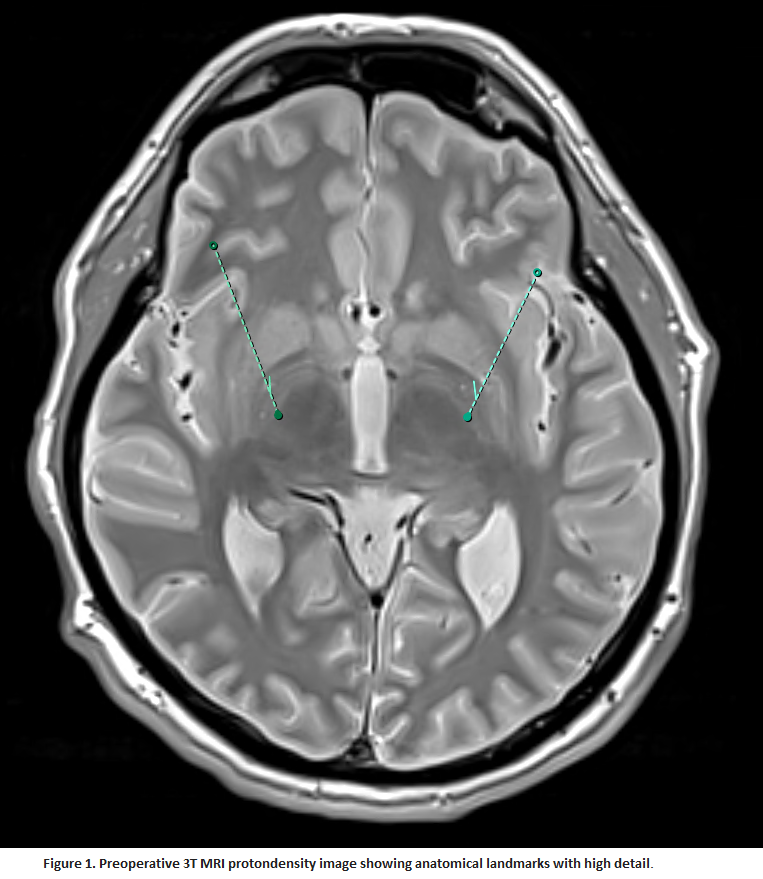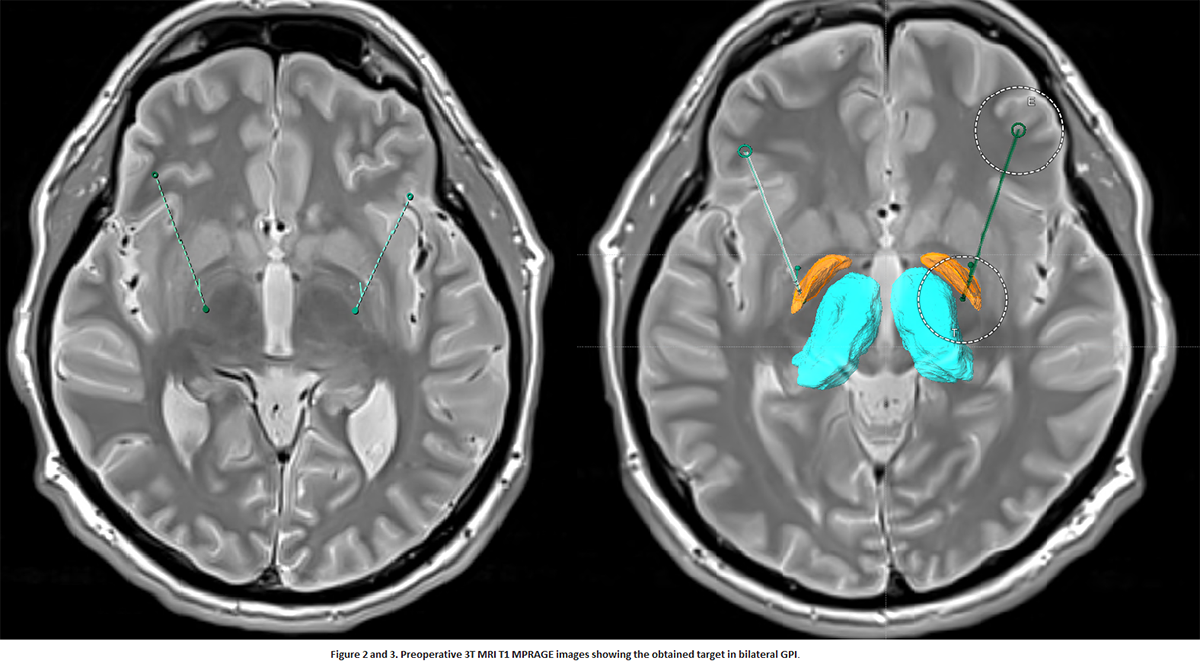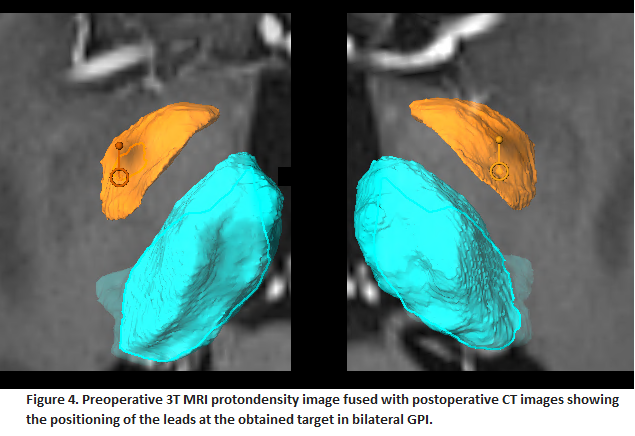Session Information
Date: Wednesday, September 25, 2019
Session Title: Surgical Therapy
Session Time: 1:15pm-2:45pm
Location: Les Muses Terrace, Level 3
Objective: Improving targeting accuracy in the treatment of secondary dystonia with DBS of GPi
Background: Dystonia is a very disabling disease. Deep brain stimulation (DBS) of the globus pallidus internus (GPi) has been proven to be a successful treatment for primary dystonia. The evidence in DBS for primary dystonia is widespread discribed, but the results in secondary dystonia are unclear. A crucial part of the surgical procedure contains the anatomical accuracy of the implanted electrode comparing with the obtained target.
Method: A 57-year old male patient developed a severely disabling cervical dystonia, secondary the longterm neuroleptic drug intake for Bipolar Disorder. Best medical treatment did not lead to satisfactory results. The patient was accepted for surgical treatment. Preoperative 3T MRI protondensity and T1 MPRAGE with gadolinium sequences images were made with a Siemens Skyra 3T MRI under general anesthesia. Direct targeting through visualization of the GPI in protondensity images was done. After attachement of a CRW frame, CT guided stereotactic images were made and fused with the MRI images. Bilateral DBS of the GPi was performed under general anesthesia. The anatomical target was the posteroventrolateral part of GPi. Peroperative microrecordings and macrostimulation were used to verify the correct electrophysiological location and estimate the threshold for especially capsular motor side effects. There were no surgical or postoperative complications.
Results: The patient developed 90% relieve of the symptoms, starting the days after surgery without any side effects.
Conclusion: The success of DBS correlates with the anatomical accuracy of the implanted electrode. The error between anatomical target and the final electrode trajectory can be decreased by improving the quality of the preoperative MRI images. Anatomical landmarks are better defined with specialised MRI settings. General anesthesia avoids motion artifacts during the MRI and the surgical treatment. More evidence has to be obtained for surgical treatment with DBS in secondary dystonia.
To cite this abstract in AMA style:
S. Hendrickx, PH. Bourgeois, A. Tieleman, D. Vanhauwaert, T. Couvreur, O. van Damme. Successful treatment of secondary dystonia with deep brain stimulation of the globus pallidus internus [abstract]. Mov Disord. 2019; 34 (suppl 2). https://www.mdsabstracts.org/abstract/successful-treatment-of-secondary-dystonia-with-deep-brain-stimulation-of-the-globus-pallidus-internus/. Accessed April 20, 2025.« Back to 2019 International Congress
MDS Abstracts - https://www.mdsabstracts.org/abstract/successful-treatment-of-secondary-dystonia-with-deep-brain-stimulation-of-the-globus-pallidus-internus/



